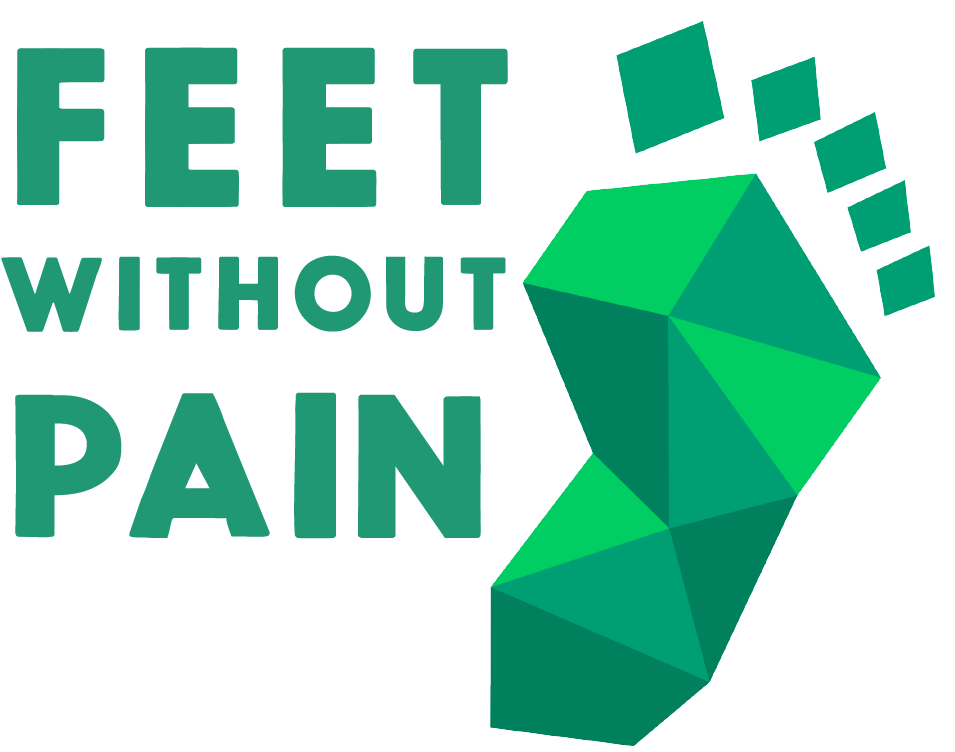Made to Measure Shoes
We have developed a range of made to measure shoes for both men and women, aiming to enhance the quality of life. These shoes are suitable for anyone, particularly individuals with wide feet or foot deformities who struggle to find comfortable and well-fitting footwear. Feet Without Pain’s made to measure shoes are meticulously crafted to suit each individual’s unique foot shape, effectively eliminating all discomfort and stiffness typically associated with regular shoes.
To gain a better understanding of the common foot conditions experienced by Brazilians and how custom-made shoes can alleviate these issues, please continue reading below.
Prevalence of pain in the Brazilian population
We conducted an online survey with 3,316 participants, exploring the correlation between foot characteristics and health-related quality of life.
Have some pain in the knees.
Perform activities without difficulty.
Have or have had foot pain.
- men
- women
Pain in these regions is caused by several reasons, from factors that cannot be changed, such as gender, age, and type of foot, to behavioral factors, such as time standing, weight, physical activity, and footwear.
The type of shoe we use is a crucial factor. With custom-made shoes, we eliminate any possibility of you experiencing discomfort, pain, or developing pathologies caused by ordinary shoes.
Data were taken from the survey “Brazilian Feet – An in-depth study of 26,339 people “ by Feet Without Pain.
Why made to measure shoes?
According to the survey “Brazilian Feet”, the way shoes are generally produced meets the needs of 80% of the population. The other 20% are people who feel uncomfortable with these shoes, those with wide feet, swollen feet, deformities, pathologies, or who spend much time on their feet.
Tailored shoes accommodate the shape of the person’s foot, improving comfort and eliminating the pain caused by ordinary shoes. They are uniquely made for each person’s foot, with millimetric digital precision, considering all the details of foot problems such as footstep type and pain. See now other benefits of custom-made shoes:
- Perfect fit;
- More comfort;
- Standing longer without pain or discomfort;
- Prevention of disease progression;
- More space to fit a custom insole.
And if you find yourself in one of the conditions below, using bespoke shoes is also recommended. Check it out:
Wide feet
One of the most accentuated differences between people that greatly impact everyday life is the feet’s width. Feet of the same length can have very different widths mainly affecting shoe fitting.
Swollen feet
Swollen feet, ankles, and knees can be caused by excess fluid accumulated in the region during the day. It often happens to women in their menstrual period and the elderly due to the natural wear and tear of old age. Many reasons cause the liquid accumulation, such as spending a lot of time standing or sitting, in addition to blood, kidney, and heart problems.
Custom shoes help accommodate feet with a swelling tendency and wide feet. To learn more about swollen feet, click here.
Foot problems caused by tight shoes
Soreness is the first sign that shoes are tight or uncomfortable. It can press the skin, causing injuries, and press the bones, developing pathologies and more serious injuries. See what they are:

Blisters
Did you know that friction between the skin and shoes is the main cause of foot blisters? If you suffer from this problem, we have a solution for you!
To learn more about blisters, click here.
Calluses
The callus is a thickening of the skin layers! This thickening occurs when friction or hyper pressure occurs in the region where the callus appeared. This is a response from our body to external stimuli, and the thickening protects the innermost layers of the region where these calluses form.
To learn more about calluses, click here.
Claw and Hammer Toes
Claw toe and hammer toe are deformities of the toes, usually due to retraction and shortening of the tissues (muscles and ligaments) of the foot. One of the causes of hammer and claw toes is wearing tight shoes. Usually, they stimulate a lot of calluses and make it difficult to wear some types of shoes.
To learn more about claw and hammer toes, click here.
Bunion
A bunion is an anatomical change in the big toe. The big toe deviates toward the other toes, creating a bony enlargement at its base. Commonly known as hallux valgus, it is one of the most common chronic foot deformities.
To know more about the bunion, click here.
There are several causes for the emergence of a bunion, but one of the main ones is wearing inadequate shoes that squeeze the feet and compress the toes.

Bunionette
A bunionette is a bump that appears on the fifth metatarsal, the bone in the foot in front of the little toe. It is considered a fifth-toe bunion and can become painful if there is friction with shoes and excess load in the region. It can also be caused by tight shoes.
To learn more about bunionette, click here.
Overlapping toes
Did you know that wearing inadequate shoes is one of the leading causes of overlapping toes? Overlapping toes are toes with altered positions. This results from an injury caused by a degenerative process or trauma to the bottom of the foot, known as the plantar plate.
To learn more about overlapping fingers, click here.
Pain in the foot sole
Pain in the sole occurs due to the middle foot tissue inflammation. Factors such as arch structure, foot alignment, being overweight, inadequate shoes, high-intensity physical activities, and very cavus or flat feet may be related to pain in this area.
To learn more about pain in the sole, click here.
Production of custom shoes
Bespoke shoes are made with high precision. First, we check all your measurements, shape, and foot type with a 3D scanner.

The shoe mold is printed on our 3D printers so that it is produced exactly with the shape, curves, and contours of your foot. Then, we assemble your shoes with the mold in 3 working days. Finally, we send you your custom-made shoes!
Custom shoes and orthopedic insoles
Bespoke shoes eliminate the pain caused by conventional footwear, which can often be tight and uncomfortable. Additionally, the custom-made shoe accommodates deformities such as bunions, claw toes, limb differences, and very large, wide, swollen feet.
To eliminate the pain caused by pathologies generated by mechanical problems (excessive pressure and misalignment), the ideal thing is for custom-made shoes to be used with a custom-made insole that redistributes pressure on the sole and aligns the joints. To learn more about insoles, click here.
The History of the Shoes
Have you ever wondered how and when we started wearing shoes? This story started a long time ago, a thousand years before Christ. Paintings from the Paleolithic period, found in caves in southern France and Spain, show that prehistoric men already used shoes, which at that time were poorly developed and made of materials such as straw and wood.
Shoe creation was a natural event, which arose from man’s need to protect his feet when walking on stones and soils unknown to him.
Ancient Egypt
In Ancient Egypt, only nobles wore shoes, and only at necessary times, carrying them with them during the day. In this region, manufacturers produced shoes made from straw, papyrus, palm fiber, and even gold if the shoes were intended for a pharaoh. Inside the Egyptian hypogea, the underground chambers used for burials were found paintings that represented each stage of the shoe production.
Greece and Rome
In ancient Greece and Rome, footwear became increasingly a social indicator. In Rome, each footwear color represented a group of people and their titles. Slaves, on the other hand, were known for not wearing any footwear or foot protection.
The Greek people developed several models of shoes and were the first to create special shoes for the right foot and left foot.
The shoes we have today are influenced by the Muslim culture in Europe during the Middle Ages. They brought a diversity of materials and techniques that revolutionized the way of producing footwear at the time.
It does not stop there! King Edward I of England was responsible for standardizing shoe numbers. Different cultures, at different times, contributed to the development of footwear as we know it today! Several options are available on the market, for different occasions, activities, and styles.
It’s very easy to find a shoe that matches your tastes, but is it good for your feet’s health? Does it offer everything your feet need?
Feet Without Pain is now also part of shoe history!
Frequently Asked Questions (FAQs)
How much does a custom shoe cost?
Feet Without Pain bespoke shoes cost depends on the measurements taken during the evaluation. And there’s more! If you don’t adapt to your shoes within 90 days, Feet Without Pain refunds your money! It’s simple and easy!
How to purchase your custom shoe?
ÉIt’s fast and easy! Schedule a free evaluation of your feet with our specialists to buy your custom-made shoe.Call, send a message to WhatsApp at, 4003-8883 or visit:www.pessemdor.com.br/agendamento.
How does the evaluation work?
Upon arriving at a Feet Without Pain branch office, you will be received by a foot, ankle, and knee specialist, who will then fill out a registration form and ask some questions about your pain. Next, the assessment of the feet begins.
The specialist will perform an examination of your feet to understand your foot pains and complaints. Then, using the high-precision 3D scanner device, the specialist captures your feet’ measurements.
We are the only company with a 3D scanner for designing custom shoes. First, with the measurements of your feet, a mold is created using 3D printers, and after that, we start making your shoe.
How long does it take for the shoes to be ready?
Feet Without Pain produces custom-made shoes in up to 3 days; then, they are sent to your home free of charge!



